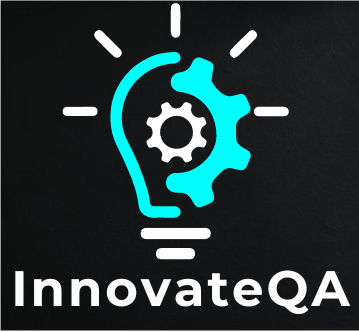Table of Contents
Toggle🤗Introduction
Hi there, QA professionals!
Today, we’re going to explore the concept of Kaizen and how it has the potential to completely transform our approach to quality assurance.
So settle in, take a cup of coffee, and let’s discuss how we can really rock these ideas.
To begin with, what on earth is Kaizen anyway? That’s a word from Japanese that means “change for the better” or “continuous improvement.” Consider it a mindset as opposed to a rigid set of guidelines. In order to gradually increase productivity and quality, workflows, systems, and procedures must all be made with little, gradual adjustments.
You may be thinking, “But I’m already knee deep in test cases and bug reports!” at this point. How am I meant to fit all of this Kaizen stuff in?” I understand, I promise. Our days are filled with deliverables and deadlines.
Here’s the thing about Kaizen, though: its core principle is working smarter, not harder.
Let’s now discuss how to include some Kaizen principles into our QA procedures:
🍵Have a Cup of Green Tea First: Reflection
Reflection is the key to kaizen. Take a moment to sip your green tea metaphorically and consider what’s and isn’t working. It is important for us as QA specialists to periodically evaluate our testing procedures. What did the previous sprint go well? Is there anything more seamless? Accept the ability of team meetings and retrospectives to pinpoint areas in need of development.
🧈Tiny Tofu Blocks: Small, Iterative Changes
Kaizen does not necessitate a radical change. It thrives on little tweaks, like adding tiny chunks of tofu to a boiling soup. Consider making incremental, minor adjustments to your testing processes rather to waiting for a big release to address everything. Modify your documentation, automate time-consuming chores, or adjust your test scripts. Significant gains can come from tiny adjustments.
🧑🏽🤝🧑🏻Team Engagement in Cherry Blossom Collaboration🌸
It is a team sport, kaizen. Promote cooperation between developers, QA specialists, and other stakeholders. Talk about your successes, struggles, and insights. A cooperative team is just as appealing as a single petal in a blossoming cherry blossom.
Build a Culture of Feedback🔄
Feedback is essential to Kaizen. Encourage candid dialogue among team members. Make sure that everyone feels comfortable sharing their ideas, whether they are bug reports, suggestions for process changes, or even just words of encouragement.
🥳Celebrate Progress📈
Remember to acknowledge and appreciate your accomplishments, no matter how tiny. Acknowledge the impact of your improvements and the work that your team members have put in. Honoring accomplishments not only raises spirits but also reaffirms the value of Kaizen in your QA environment.
🧮Kanban: Making the Flow Visible
Have you heard of Kanban? It’s similar to having a workable road map. By putting in place Kanban boards, you can observe how tasks are moving along, spot bottlenecks, and increase productivity. This visual tool makes it easy to identify areas for improvement at a glance and is in perfect alignment with the concepts of Kaizen.
Continuous Learning: The Sushi Roll of Kaizen🍣🥢
Our skills should always be evolving, just like sushi rolls. Accept lifelong learning. To maintain the learning atmosphere, participate in webinars, workshops, or even launch a book club inside your organization. You can contribute more to improvement the more knowledge you have.
Adopt the Mindset🙇
Let’s start by making the correct mental adjustments. The main goal of kaizen is to promote a culture of ongoing development. It’s about having faith that, despite their current decent state, things can always be improved. Thus, discard the “it’s good enough” perspective and adopt the “how can we make it even better” one.
🏯Idea of Gemba
The idea of “gemba,” which essentially refers to traveling to the source in order to observe things firsthand. To properly grasp the needs and pain areas of end users, it may be necessary in our situation to spend time with engineers, product managers, and end users. We can learn important lessons from stepping outside of our comfort zones and experiencing life firsthand that we would not learn from spending our days in front of a computer screen.
Stay Flexible🤸♂️
Lastly, keep in mind that there is no one-size-fits-all approach to Kaizen. A team’s formula that works for one may not work for another. Remain adaptable and ready to change course as necessary to meet the specific requirements and obstacles faced by your team.
💁♀️Conclusion
It’s not difficult to adopt Kaizen concepts; but, it does call for a mental adjustment and a dedication to ongoing development.
By incorporating Kaizen into our QA toolkit, we can improve our procedures, deliver better quality products, and establish ourselves as true champions of quality assurance.
Recall that kaizen is a journey rather than a goal. It’s always thrilling because there’s always room for progress.
Happy Kaizening!🙋♂️
👍You May Also Like👇
🔝4️⃣5️⃣➕ Manual Testing Scenario Based Interview Questions 2024 🚀
🤖 🔝6️⃣5️⃣ ➕Automation Testing Interview Questions 2024 🚀
🔝6️⃣5️⃣➕ API Testing Interview Questions 2024 🚀
🔝6️⃣5️⃣➕ Postman Interview Questions 2024 🚀
🔝3️⃣0️⃣➕ Cucumber Interview Questions 2024 🚀
🔝5️⃣0️⃣➕ TestNG Interview Questions 2024 🚀
🤖🔝💯+Selenium Interview Questions For Experienced 2024 🚀
🍵Top 💯+ Java Interview Questions For Automation Testing 2024 🚀
🔝6️⃣5️⃣➕ JMeter Interview Questions 2024 🚀
🎈Feeling Proud To Share🍾🎇
InnovateQA featured in Feedspot’s Top 100 Software Testing Blogs
Please find most comprehensive list of Top Software Testing Blogs below:
Top 100 Software Testing Blogs
We are grateful for all love and support received in this short period of time.😊
Thanks Everyone! 🙏

